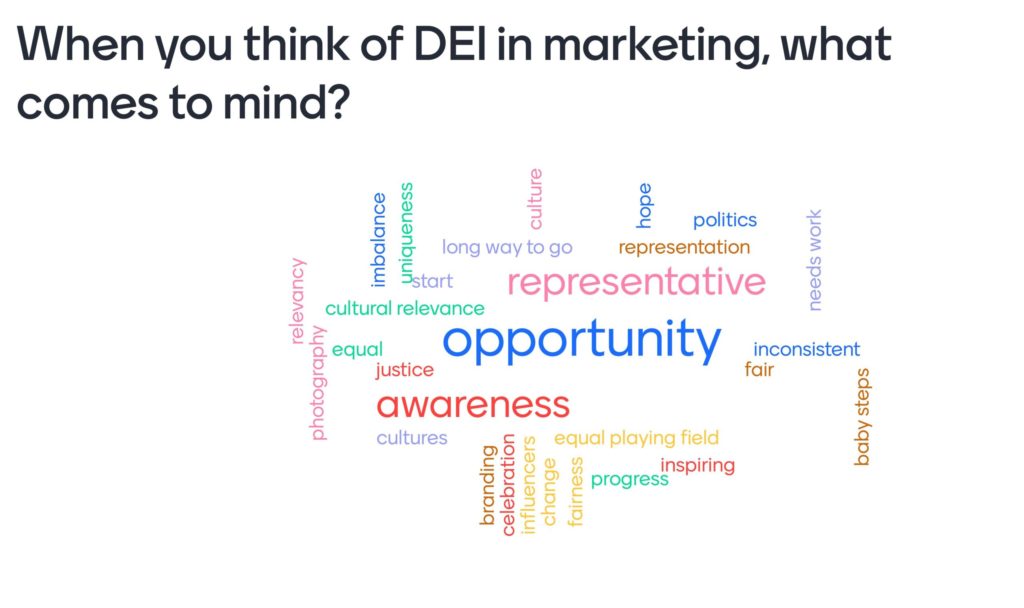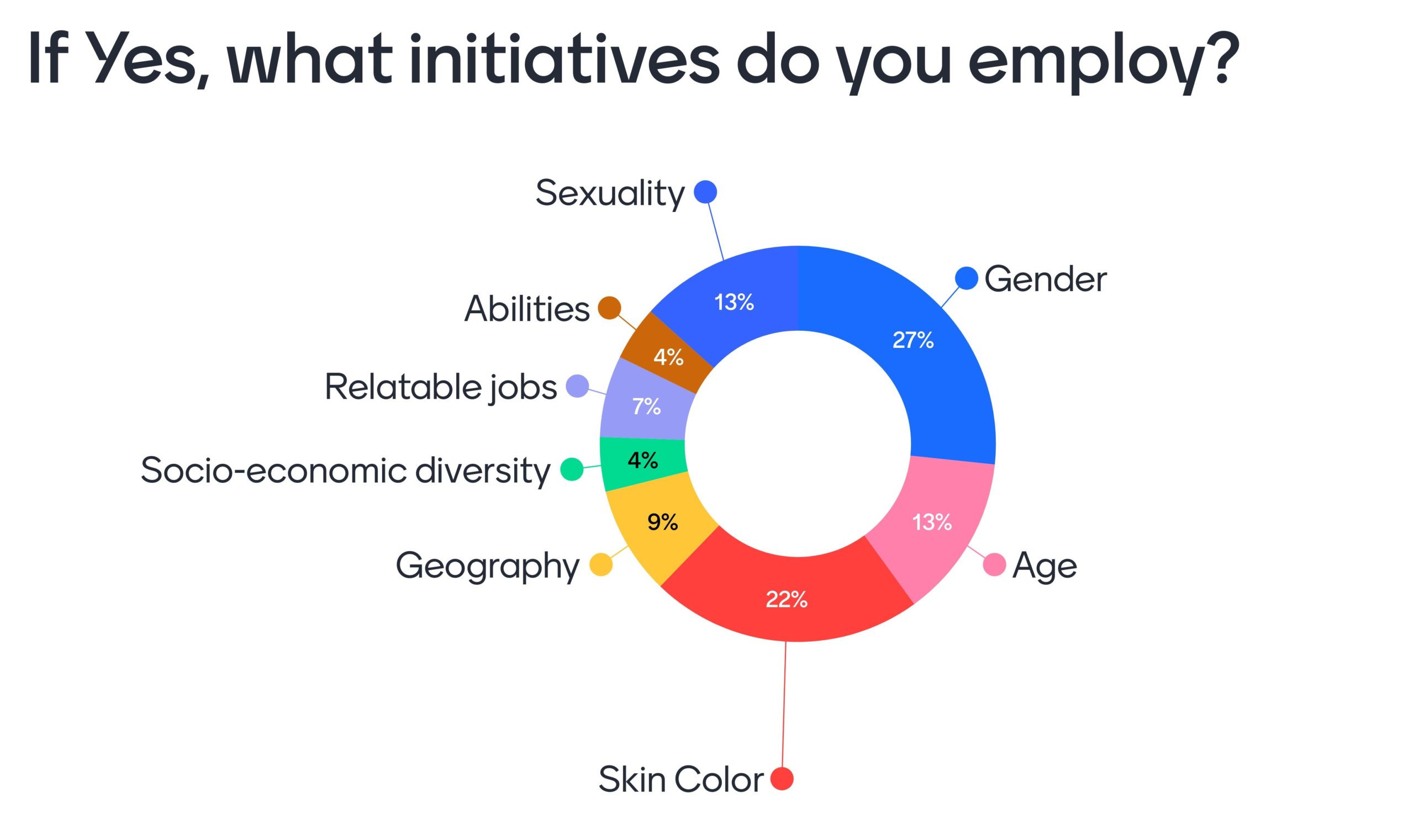
While there are a lot of considerations for hotel marketers when putting together advertisements and campaigns, ensuring that they promote the company’s values surrounding diversity, equity, and inclusion continues to be top of the list.
The conversation can be uncomfortable, but we must continue to have it.
In May 2021, HSMAI’s Marketing Advisory Board (MAB) discussed the question “When you think of DEI in marketing, what comes to mind?” This word cloud portrays those feelings.
Inclusive Impact on Marketing
Research has even backed up the idea that inclusivity is beneficial in the advertising world. Recently, a Kantar study found that ads that are considered progressive are 25 percent more effective. The study judged effectiveness by how pleased viewers were, the memorability of the advertisement, and actual metrics related to progressive campaigns.
One MAB member wondered if any hotel has purposefully targeted an underrepresented demographic. “I would be very surprised if they had,” the member said. “I think it’d be wonderful if a company was willing to take on that kind of risk, because I think there is risk to the performance of the ad and the overall operations, but at the same time if it was very delicate, I think that that could be an impressive case study and it would present the company in a favorable light.”
Can targeting more diverse audiences be a huge opportunity despite the risk? “It’s kind of a chicken-and-egg thing,” another member said. “You’re marketing to who you think is your target audience based on historical performance. But there could be a whole other group out there that you’re not marketing to, that would come if you marketed to them in the way that they want to be marketed to.”
Marketing Initiatives
Marketers should be especially careful when it comes to creating marketing materials to ensure that they are using inclusive language and visually representing a variety of demographics. MAB members recommended incorporating DE&I into marketing in ways such as colorblind model casting, rethinking language, looking at culture, and ensuring ADA accessibility on websites and PDFs.
“You have to be careful as a marketer that you really understand the cultural insights,” an MAB member said. “I have seen a lot of brands that thought that it was enough just to take an existing general ad, translate it into Spanish, and then broadcast it on Telemundo. It falls flat. You have a savvy marketplace that sees right through that and it can backfire.”

Tammie Carlisle, of Milestone Marketing, shared a recent experience of learning about being more inclusive when it comes to language. “There’s so much thoughtfulness around this with the younger generation,” she said. “I was talking with my daughter about Demi Lovato coming out as being nonbinary. She was really excited when she told me about it, and I said, ‘That’s awesome, I’m proud of her.’ And my daughter just looked at me and said, ‘Mom!’ It took me a second to realize what I said. So, I thanked my daughter for calling me out on using the wrong pronoun. I try to be thoughtful and respectful, but I didn’t even think about what I said. We have to be really thoughtful about language.”
When many people think about incorporating DE&I initiatives into their marketing, usually gender and skin color are the first ones to get attention. Some MAB members thoughtfully address other underrepresented demographics such as abilities, age, socio-economic diversity, and sexuality.
A final though here is important: If you consciously diversify your marketing, consider next how you measure that diversity and audience alignment.
DE&I Examples in Marketing
Beyond hotel companies, many other organizations are making strides to be more inclusive; hoteliers may want to take a lesson from them. One example that MAB members discussed was Google’s annual diversity report, which showed that last year, despite making gains in hiring diverse employees, the company saw its retention rate for people of color drop because employees didn’t feel appreciated or included, which has led Google to take corrective steps. Google also found that while the company increased racial and gender diversity in advertisements, it relied upon stereotypes, such as putting Black people in sports roles and white people in professional roles, which led to rethinking the strategy.
Another example that was discussed was the Savage Fenty show, which is similar to the Victoria’s Secret Fashion Show, but models are much more diverse in terms of gender, ethnicity, and weight. Examples of this ad and 10 others show inspiring inclusive marketing advertisements.
Where to Start
While no person or company will ever be perfect, MAB members agreed that it should always be a priority to keep improving in these areas.
“It’s about educating yourself first, getting involved and learning,” Stephanie Smith said. “And then being intentionally and incrementally better than we were yesterday.”
Stephanie Smith
HSMAI’s Marketing Advisory Board, in collaboration with the HSMAI Foundation, is creating a resource hub to curate and share resources around DE&I issues in marketing — and in hospitality industry talent.
This article was originally published here by HSMAI on June 10, 2021



